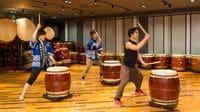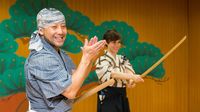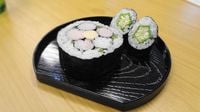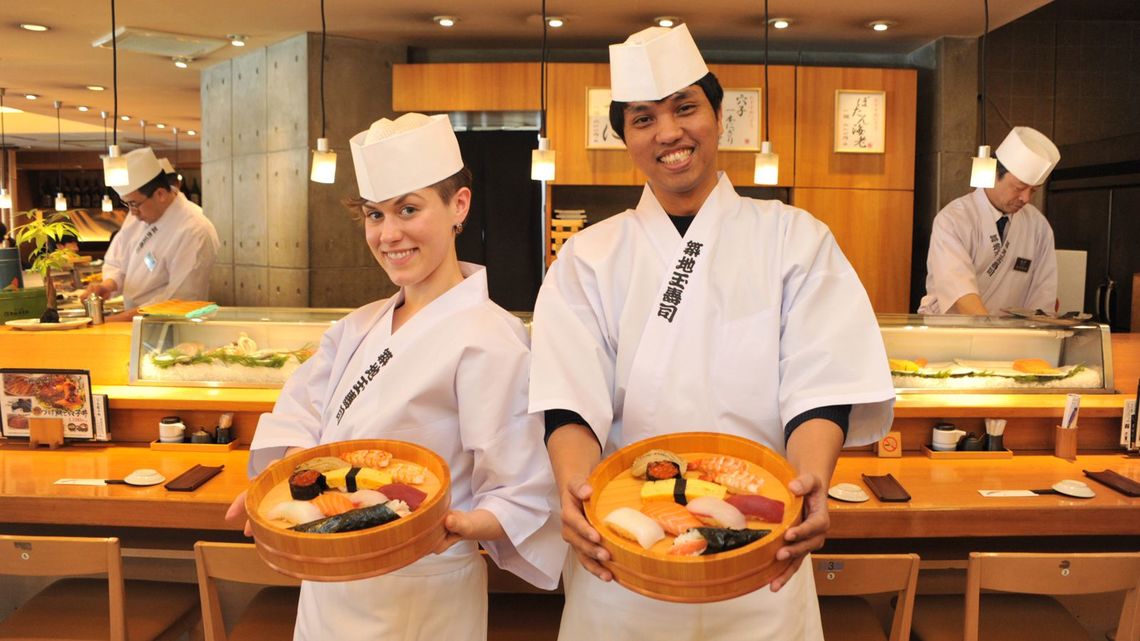
For sushi lovers in Tokyo, eating sushi in Tsukiji is an absolute must. But why stop there? You can learn how to make sushi from a professional chef at Tsukiji Tamasushi, a sushi restaurant that's been in business for 92 years!
Rachael from the DiGJAPAN! editorial staff teamed up with Korn, a Thai student studying abroad in Japan to see what it was like for themselves!
If you want to be a sushi chef, you've got to dress like one.
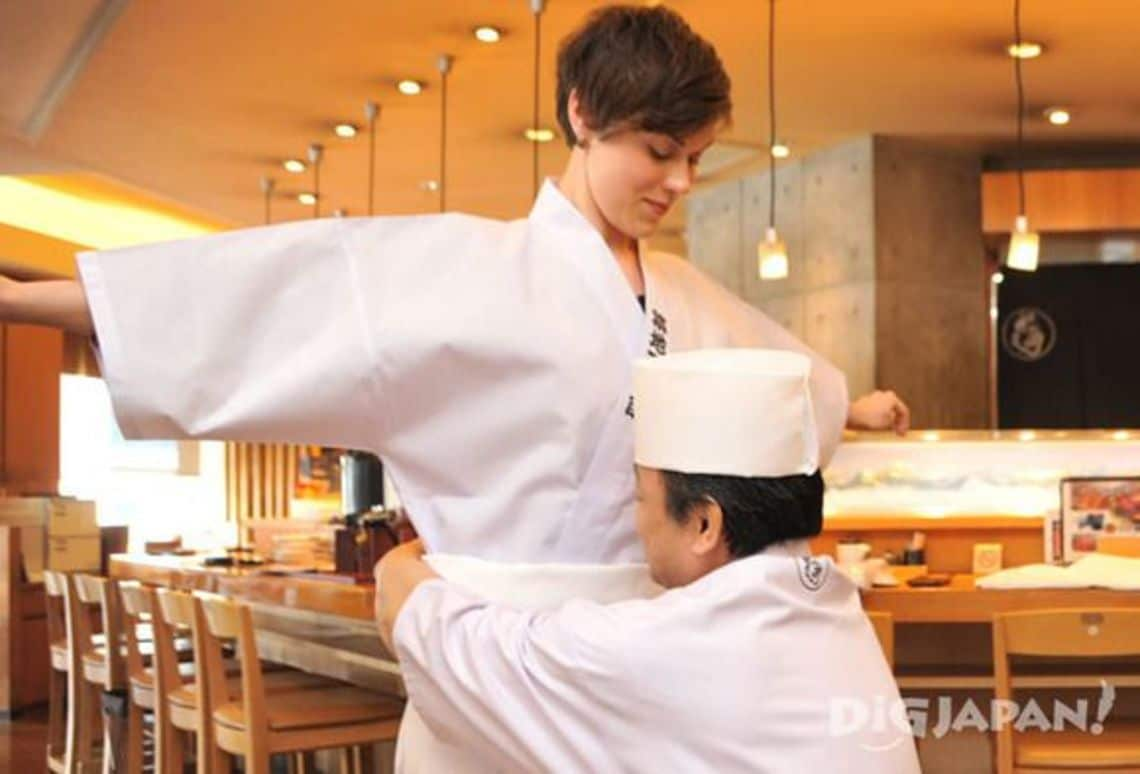
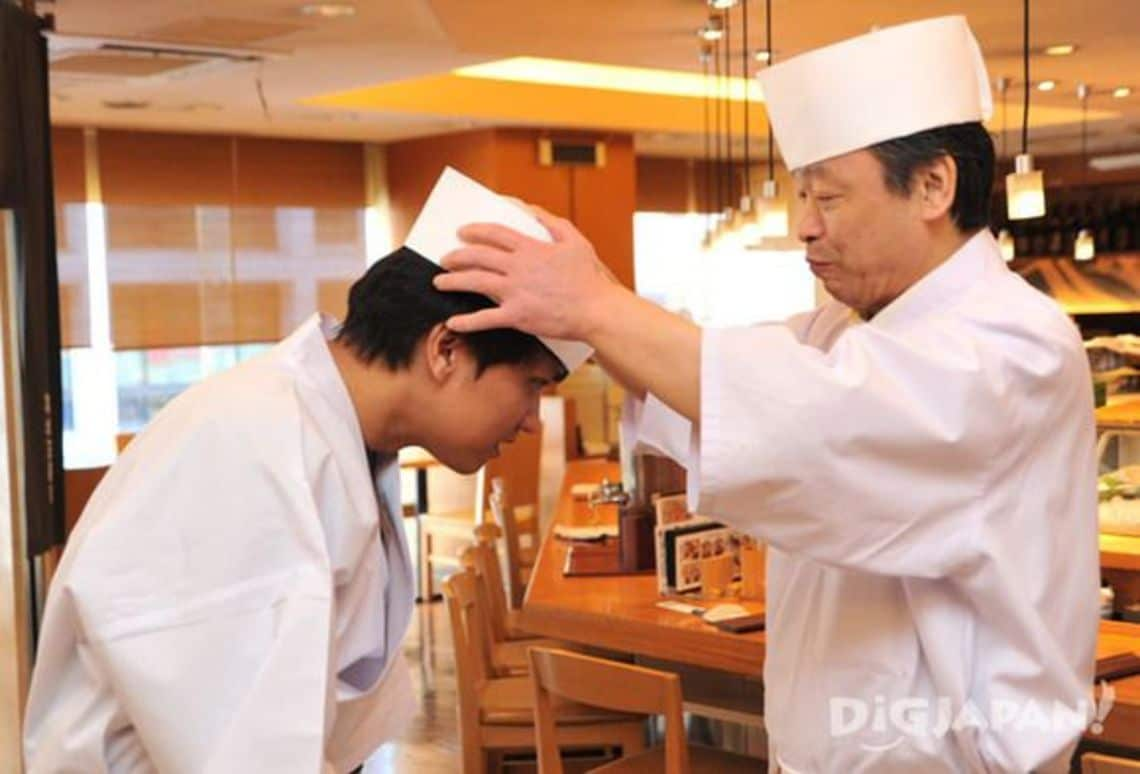
Sushi lessons at Tamasushi are usually limited to only one group per day. This means you have the undivided attention of your sushi chef or itamae as the profession is called in Japanese. At the beginning of Rachael and Korn's experience, their instructor-chef Mr. Shimizu helped them get dressed in the white uniform of an itamae.
Let the sushi making begin!

The lesson began with the most fundamental ingredient of sushi: rice. In the world of sushi chefs, vinegared sushi rice is called shari. Shari is ideally served at body temperature, so chefs have to work quickly to avoid warming it up in their hands when making nigirizushi. Rachael and Korn were quickly impressed by Mr. Shimizu's skill.
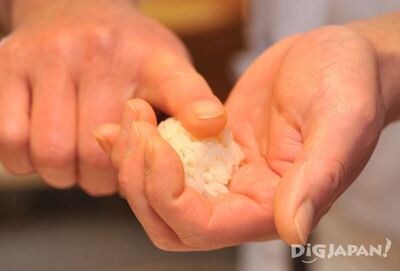
Not only do professional chefs know just how much rice to use for a single piece of sushi, but every piece of sushi they make is uniform in height! Take a look for yourself the next time you order sushi.
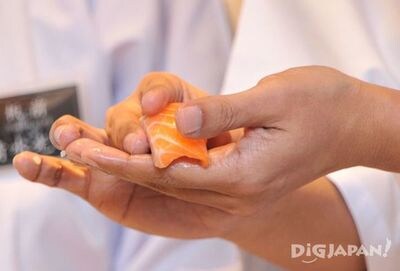
Different sushi toppings or neta have varying degrees of difficulty when making sushi. Soft toppings like eel are particularly tricky while salmon is a beginner-friendly fish.
Want to test your sushi making skills? If you've done it right, you'll be able to pick up a piece of shrimp sushi by its tail without the rice falling off. Rachael nailed it, but Korn had a little trouble. (He got it on his second try!)
Wrapping up the lesson with some temaki
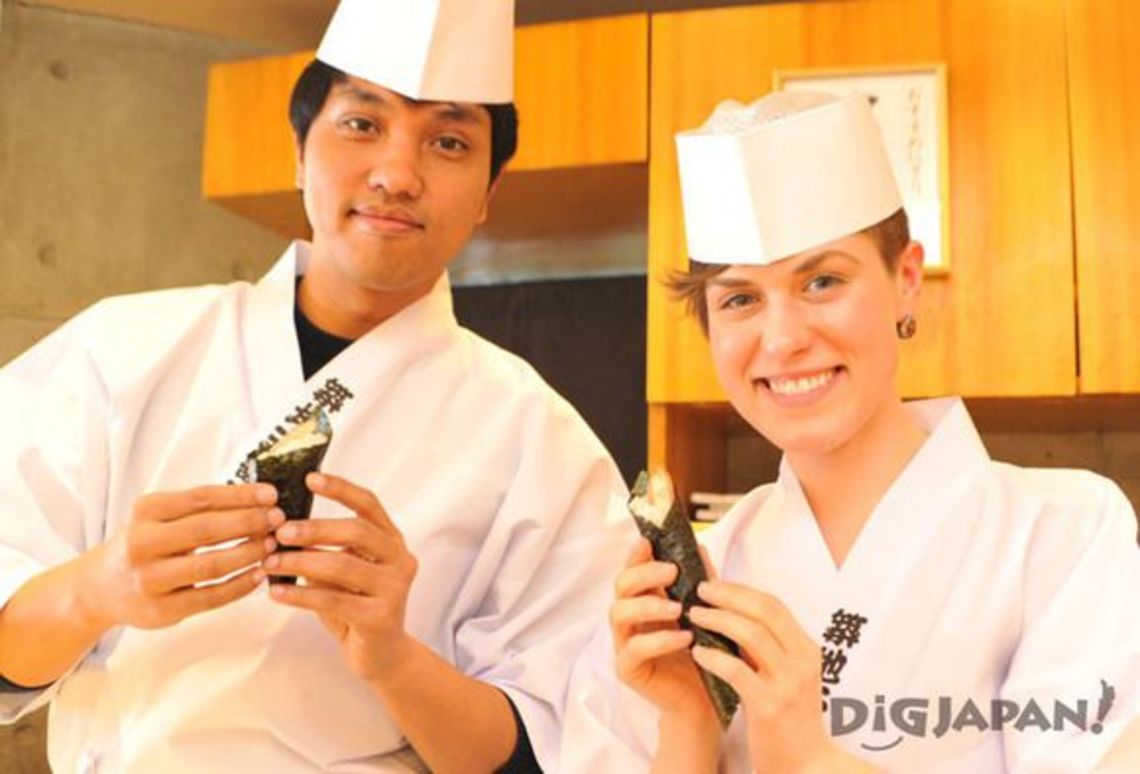
Another popular type of sushi is temaki. Appropriately called a hand roll in English, you pick these up with your hand to eat them. What you may not know is that Tsukiji Tamasushi was the first restaurant to make temaki in its now-familiar cone shape!

This may seem easy compared to the nigirizushi, but Rachael and Korn quickly learned that getting the right amount of rice is harder than you'd think. Corn had a little too much while Rachael didn't have quite enough... still delicious either way, though!
Can't have sushi without wasabi!
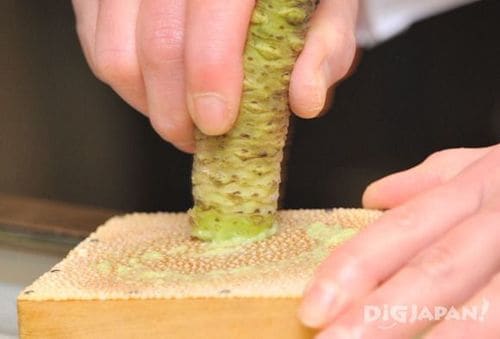
Ever seen an actual wasabi root before? Unlike wasabi made from powder, fresh wasabi has both the heat you'd expect as well as a satisfying flavor. The trick to achieving a good balance between taste and spice is to alternate how much pressure you use while grating it.
Time to serve up some sushi!
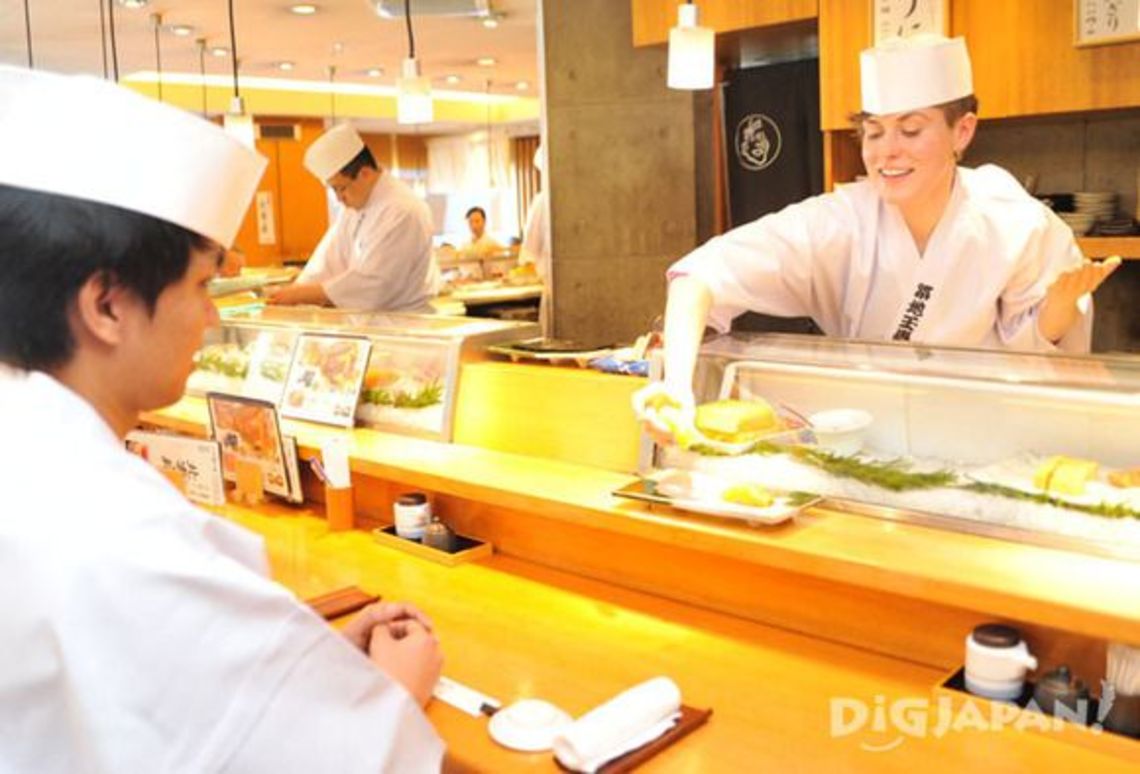
Time to put those sushi skills to work! Rachael and Korn took turns making sushi and serving each other. A professional sushi chef can effortlessly make conversation as he or she prepares the sushi. They don't make sushi hidden behind the counter, though. They make each piece at the customer's eye level so the customer knows that that piece of sushi is just for them. Rachael quickly learned that multitasking when making sushi is not easy.
Finished! Time to eat!
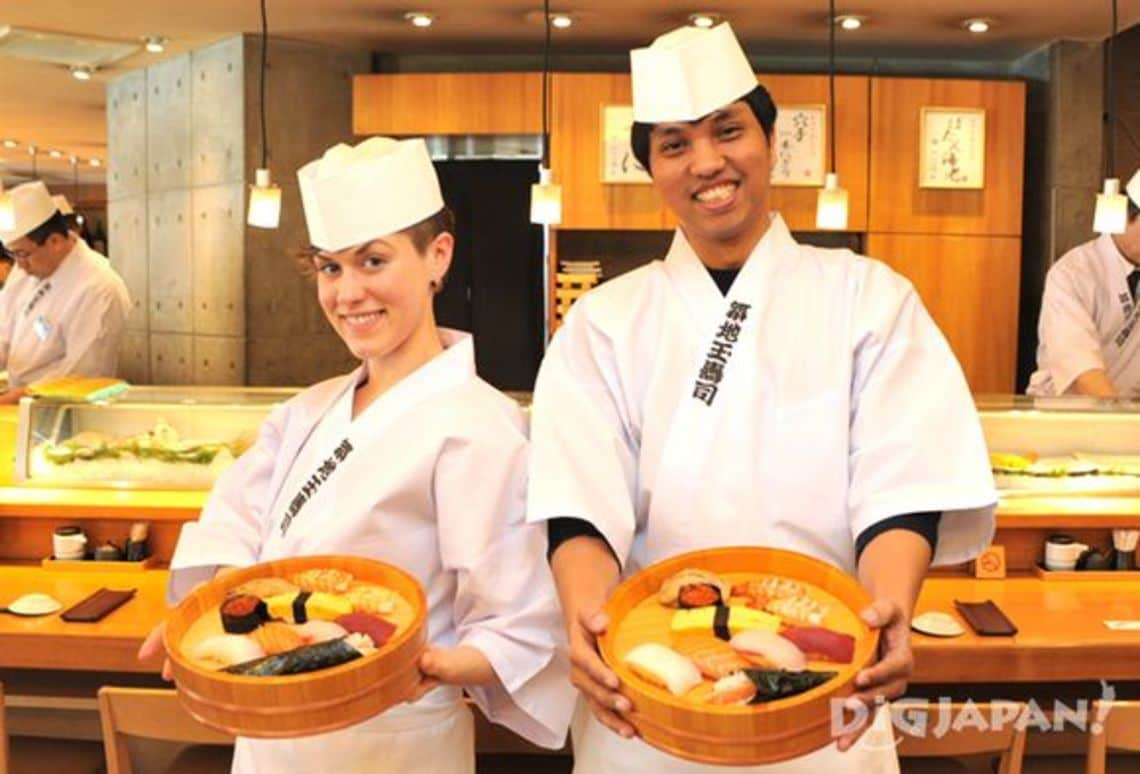
After admiring their sushi lined up prettily on a special wooden sushi plate called a hangiri, it was time to eat! Not only did Rachael and Korn have a great time making sushi, they both gained a new appreciation for the skill of the chefs who prepare it.
Our pair "graduate" from their sushi lesson!
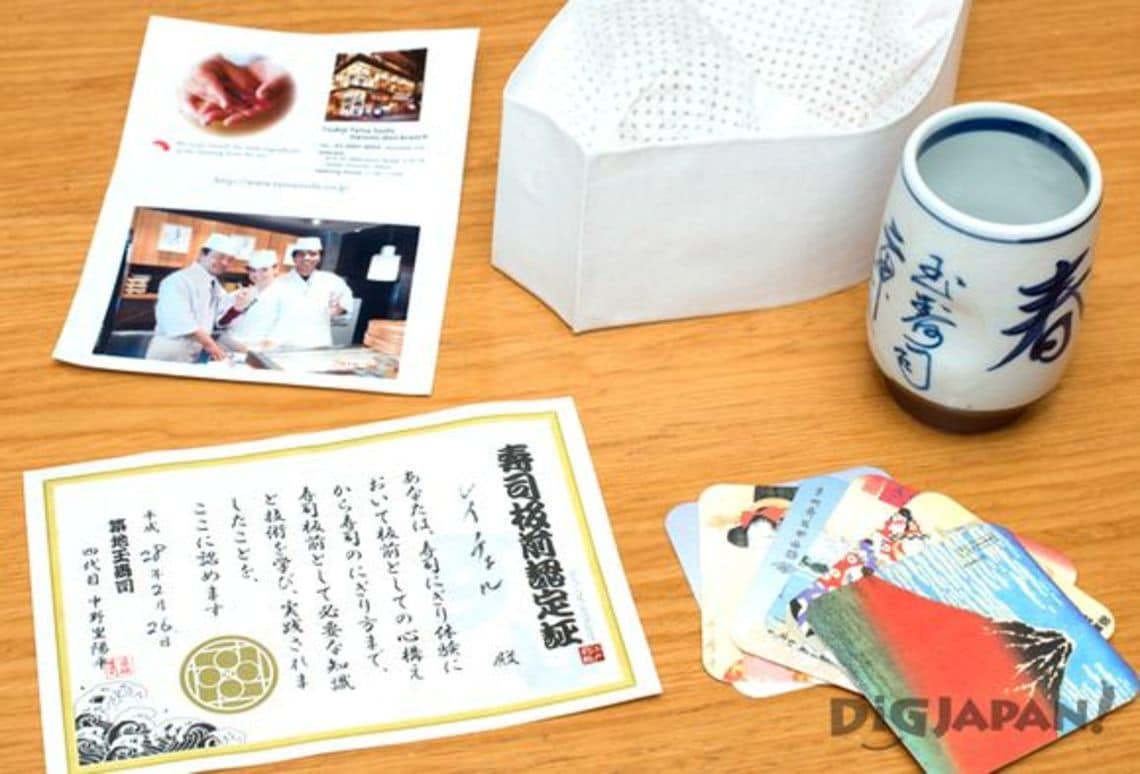
The lesson concluded with Mr. Shimizu presenting Rachael and Korn with certificates of completion in a little graduation ceremony. After that they received a special mug cup and coasters as souvenirs to remember their experience by. They also got to keep their awesome itamae hats.
Tsukiji Tamasushi Harumi-Dori Branch
Millennium Tsukiji B1~2F
2-15-19 Tsukiji, Chuo-ku, Tokyo
Length: 90 minutes
Starting times:
Weekdays 10:30 a.m.
Saturdays 9:30 a.m.
Not available on Sundays or national holidays.
Standard Course: 8,000 yen / person (tax incl.)
Premium Course: 13,000 yen / person (tax incl.)
The course described in this article is the standard course. The premium course includes watching the chef clean and prepare a fish such as an amberjack or sea bream as well as preparing the sushi rice.
※ The language of instruction is Japanese. If you cannot speak Japanese, please arrange to have a translator guide interpret for you during the experience.
Please call in advance to make a reservation.
Phone Number: 050-2018-1705 (English / Japanese)
Operator Hours: 10:00 a.m.~7:00 p.m.
Website: http://r.gnavi.co.jp/jge/en/entry/post-000814.html
(Written by Rachael Ragalye/DiGJAPAN!)
Related articles from DiGJAPAN! The Ryokan Tokyo Yugawara: A New Style of Ryokan10 Can't Miss Snacks from Don Quijote!
Used Clothing and Kimono HARAJUKU CHICAGO

